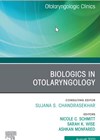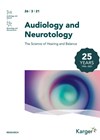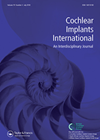
Journal Reviews
Biologics for deafness
Cochlear implants and hearing aids are inherently limited in their ability to restore ‘natural’ hearing. Biological therapy to treat inner ear pathology still is evolving rapidly with several ongoing clinical trials, though none are available for clinical practice to date....
Robotic insertion of electrode array in cochlear implantation
Cochlear implants (CIs) are commonly used for profound bilateral hearing loss. They have specific national guidance for their insertion, however patients with a substantial residual acoustic hearing are potential CI candidates. Preservation of this residual hearing can be sought with...
Semicircular canal dehiscence and cochlear implantation
Semicircular canal dehiscence (SCD) is thought to occur in 3% of the population, it is mostly asymptomatic, but patients may present with sound-induced vestibular symptoms, low-frequency conductive hearing loss, autophony, hyperacusis and aural fulness. With the increasing utilisation of cochlear...
Hearing preservation and device benefit following implantation of short or hybrid electrodes
Hybrid or short electrodes have increasingly been used in the literature in order to combine electrical with hearing-aid stimulation. However, hearing preservation of the residual low-frequencies are of utmost importance in this attempt. The present study compared hearing preservation and...








